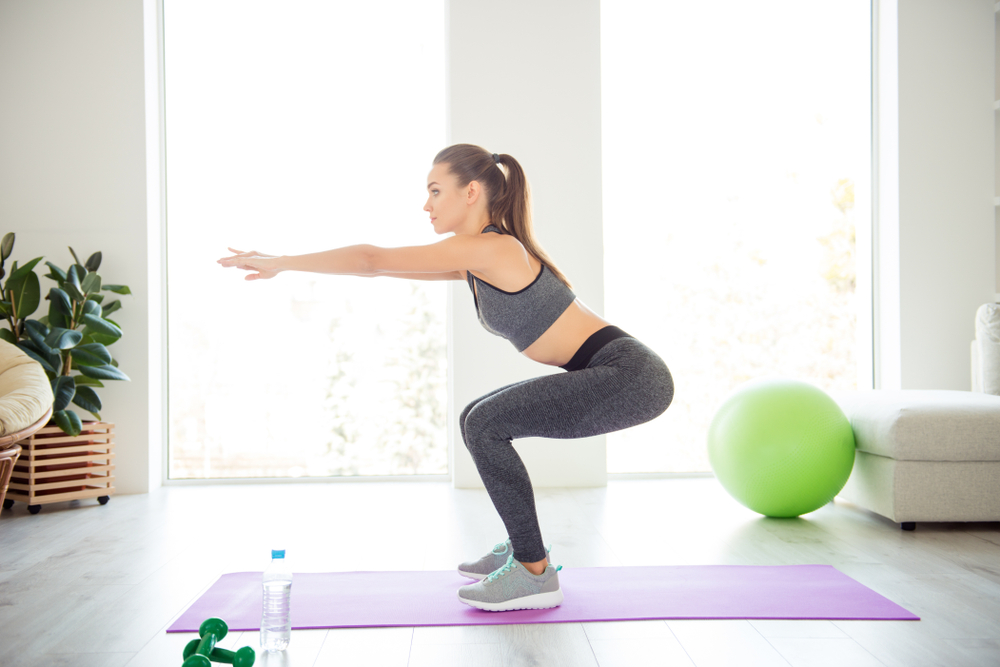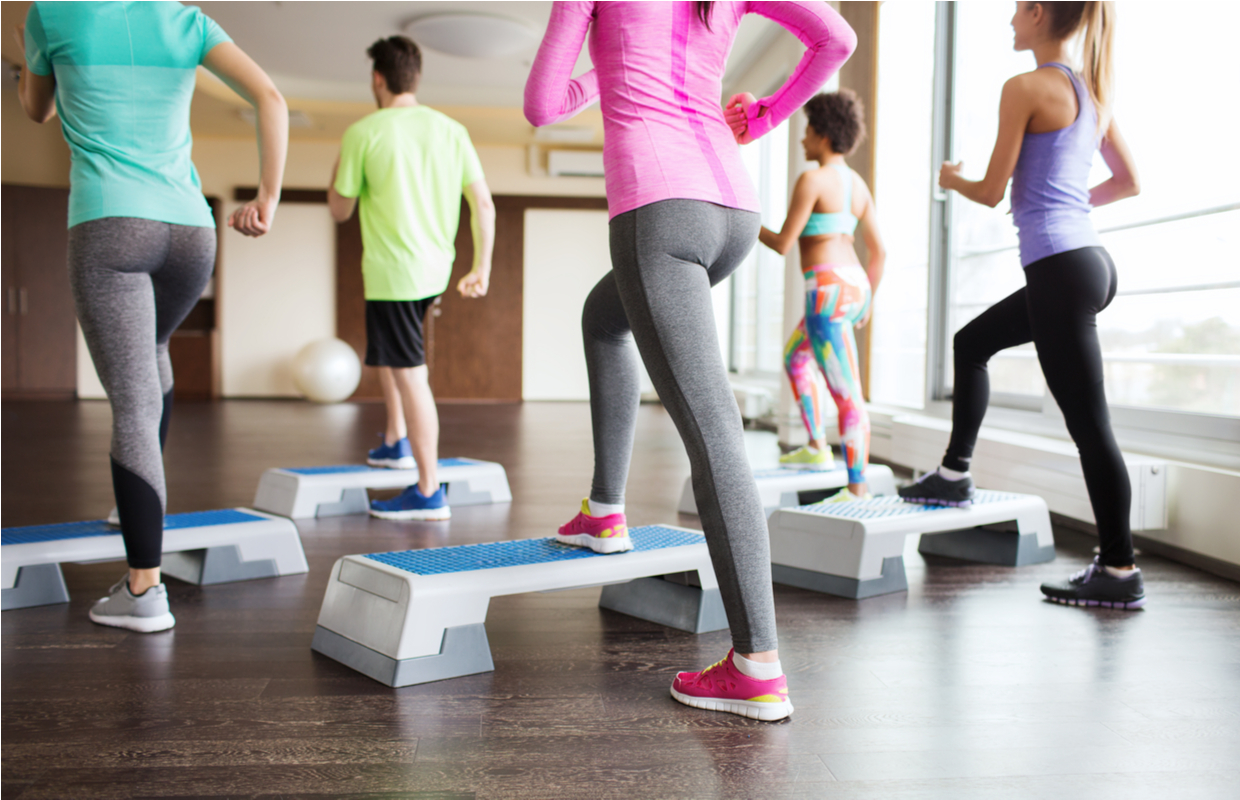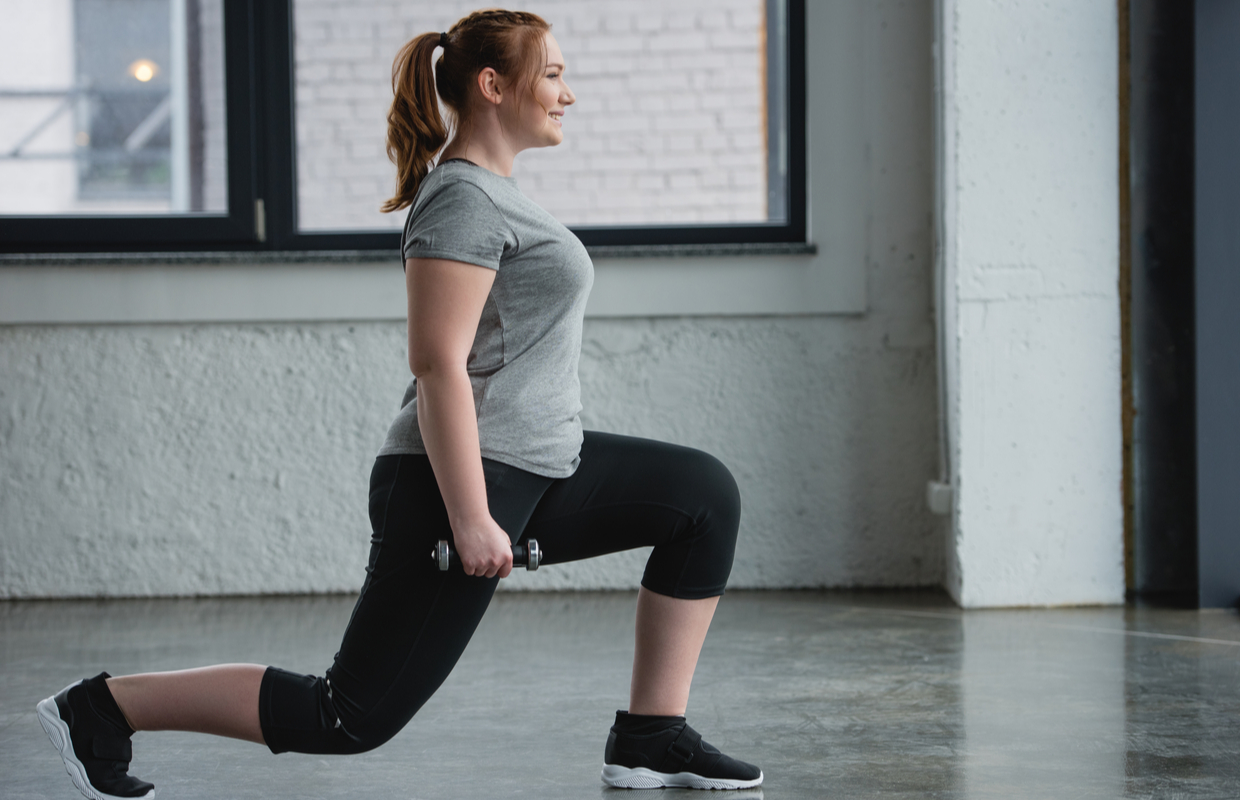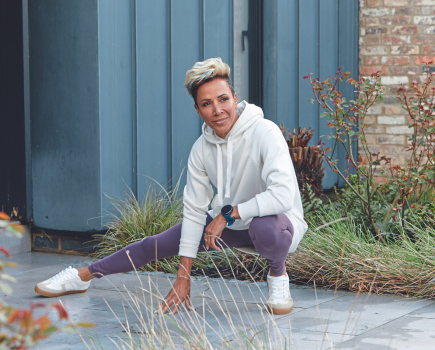Did you know, strength training can help to balance blood sugar levels and boost your metabolism? Because of this, lifting weights can also aid with the management of type 2 diabetes and other related conditions. Read on for some top tips and a strength training workout plan from strength and conditioning coach, Nolan Sunnassee…
If you automatically avoid weights at the gym, or a set of dumbbells is gathering dust at home, we’ve got some very compelling reasons to alter your attitude to strength training.
How does strength training affect blood sugar levels?
A study at Iowa State University surveyed around 5,000 adults classed as at risk for developing Type 2 diabetes, and found that building muscle mass reduces the risk by 32 per cent. All exercise is beneficial for health, but when you add strength training it sparks specific cellular changes to support and control blood sugar.
‘Everyone should use weights, especially women, because they have less “mechanical loading” on their skeletal system,’ says strength and conditioning coach, Nolan Sunnassee. ‘Weight training increases mechanical loading by building muscle around bones, which bolsters them.’
Will I get bulky if I do strength training?
Don’t be put off by the term “muscle mass” either as weight training won’t make you bulky. Instead, it helps offset significant muscle decline, called sarcopenia, which women start to experience in their 30s.
‘Muscle cells contain insulin receptors, so more muscle means more receptors, and this means you’ll naturally be better at regulating blood sugar,’ says Nolan.
‘Once you’ve eaten simple carbs and other sugars, they are stored in your liver as glucose until needed. If you don’t have enough insulin receptors in your muscles, the glucose remains unprocessed and gets stored as body fat.’
Click here to discover the best supplements for balancing your blood sugar levels!
How does strength training affect metabolism?
‘Weight or resistance training is key to increasing basal metabolic rate (BMR) – especially if built into high-intensity interval training (HIIT),’ says Nolan. BMR is your basic calorie output when you’re resting, including managing core functions, such as breathing, circulation, digestion and cell repair.
‘Strength training creates greater extended post-exercise energy expenditure (EPOC), lasting up to 48 hours after you exercise’ he says. EPOC refers to increased oxygen taken in through exercise, so your muscles can restore. It also means a stronger metabolism and fewer stored fat reserves – meaning less risk of Type 2.
‘Strength training leads to a stronger metabolism and fewer stored fat reserves – meaning less risk of Type 2 diabetes.’
While speedy HIIT provides metabolism-boosting EPOC, when it comes to increasing weight to workouts, keep reps slow. ‘Steady reps equal more time under tension for muscles,’ says Nolan.
‘When big muscle groups – think glutes (bum), quadriceps (thighs) and latissimus dorsi (lower back) – are under tension or performing powerful moves, such as squats, it targets deeper muscle fibres, which in turn improves insulin reception.’
By working with weights to feel more powerful, you’ll look sculpted on the outside, and on the inside your metabolic and cellular health will be stronger than ever too.
How often should I do strength training?
‘Aim to workout with weights three times a week, starting with 10 repetitions and four sets,’ says Nolan. ‘Then every two weeks, drop the reps by two (so from 10 to eight reps) but gradually add weight. Have rest days in between to help your muscles and nervous system repair for better long-term results.’
5 best strength training moves for lowering blood sugar

1. Squat
- Stand with your feet hip-width apart, toes pointing forward.
- Bend at the knees and ankles and slowly lower yourself down with your bum going backwards, as if sitting.
- Go as low as you can without discomfort, keeping your chest and head up.
- Avoid arching your back and push through your heels to rise back up.
Bodyweight: If you’re new to squats, prioritise technique before adding weight. Slowly sit back as if perching on a tall wall, holding a chair or worktop if needed. Get a little lower each time.
Make this exercise more challenging:
Up-level: With both hands, grip a dumbbell or kettlebell at your chest, ensuring your technique is perfect, before slowly increasing weight over a few weeks.
Next challenge? Hold a weight firmly overhead for the squat duration.
Resistance weight: Use a resistance band around your knees to make your glutes, quadriceps and hip adductor muscles work harder, as well as your back and core.

2. Deadlift
Even if you have never done a deadlift before, it’s a move you can do with weights straightaway. However, make sure you practise your technique first, using an unloaded barbell or just a broom handle.
- Holding a bar down in front of you, stand with feet hip-width apart and a slight bend in your knees. Your spine is neutral throughout this move.
- Hinge forward from your hips and bend your knees slightly, too, so the bar hangs down in front of you.
- Keep your shoulders pulled back and your head in line with your spine, while you stick your bottom back as far as you can.
- Squeeze your bum, engage your core and stand up straight, bringing the bar back up to the start. That’s one rep!
Make this exercise more challenging…
Up-level: Once confident with the technique, gradually add weight to the barbell, or use kettlebells. For a lat-boosting compound move, during the standing part lift the weight to your chest, elbows out to the side.

3. Step Up
Do this move without weights to begin with, but once you’ve mastered the technique, hold a weight in each hand to increase resistance.
- Heel-first, plant your right foot securely on a step or low box in front of you.
- Drive through your heel until your leg is straight before bringing your left foot up to meet it.
- Slightly bend the right knee and step down with your left foot, then the right.
- Repeat with the other leg; stepping up and back down.
- Right and left counts as one rep. Aim to use weights that make it possible to only do 10 reps before you’re fatigued.
Make this exercise more challenging…
Up-level: You could also hold a kettlebell at your chest and add a twist to the left then right at the top of the step to boost your core. Other modifications include increasing step height, as well as the speed of your steps – as long as you’re confident with balance and technique.

4. Lunge
Lunges really challenge your stability and are great for working your large thigh muscles. If you’re wobbly to begin with, have something sturdy nearby that you can lightly hold on to.
- With your upper body straight, shoulders back and relaxed, and chin up, step forward with one leg, lowering your hips until both knees are at around 90°, the back knee just above the floor.
- Push through your front foot to stand and repeat with other leg – that’s one rep done.
Make this exercise more challenging…
Up-level: Lunge as above, but with a dumbbell in each hand, or kettlebell at your chest, to improve balance and strengthen core.
Or, make it a compound move by holding a dumbbell in each hand just above your shoulders and to the side – elbows bent, palms towards you. As you lunge, press weights above your head to work your core and lats. As you push back to standing, slowly bring the weights down.







